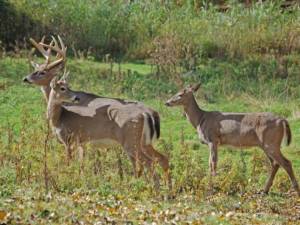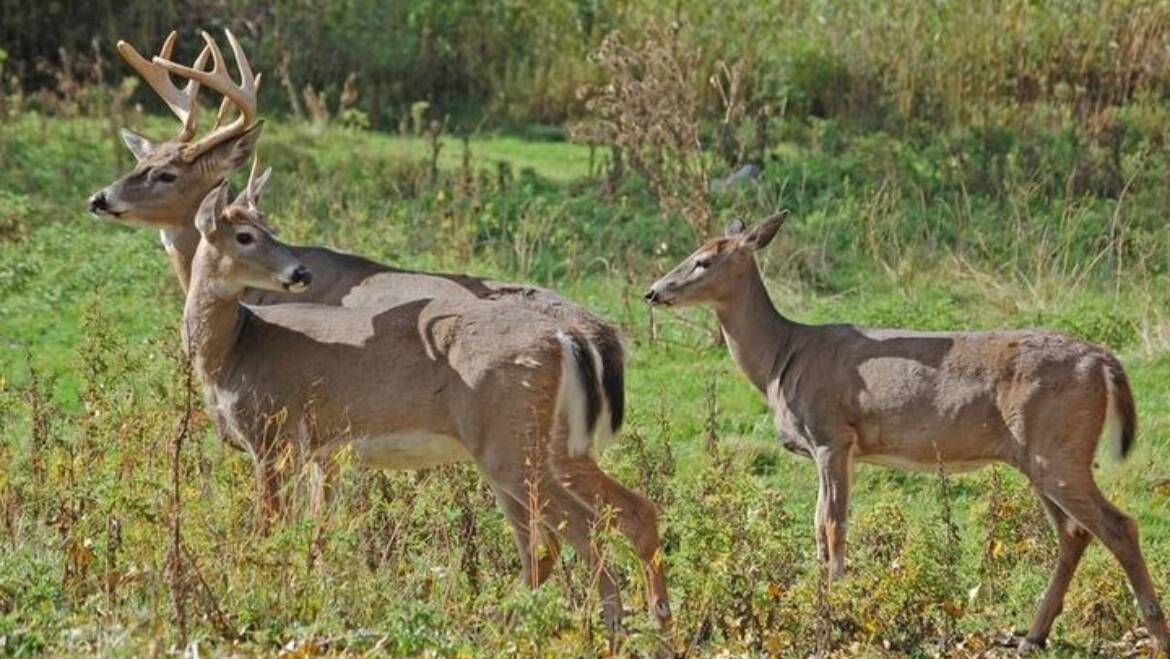October-December is when most car vs deer crashes happen. Here are some tips to avoid a crash in Maryland as deer mating season begins.
If you drive in Maryland, you know there are deer on many roads as they seek mates and extra food before winter arrives. A new study backs up these observations: Maryland is a high-risk state where the odds you’ll hit a deer while driving rank it No. 23 among the state, according to State Farm’s annual deer-vehicle collision study. That’s a small improvement from a year ago, when Maryland ranked No. 19 among all states for vehicle-deer crashes.
“Deer increase their movements significantly during the breeding season from mid-October through November as they search for mates,” Maryland Wildlife and Heritage Service Director Paul Peditto said in a statement. “Be especially cautious from dusk to dawn when deer are most active and likely to be encountered on the road,” advises motorists.
Overall, American drivers were less likely — one in 167 — to experience a crash involving a deer, elk, moose or caribou. In Maryland, the numbers have declined. Drivers here have a one in 138 chance of hitting a deer this year. That’s a higher risk than the national average, but better odds than last year, when there was a 1 in 127 chance of smashing into a deer on the road.
Here’s the list of the top 10 states where you’re most likely to hit a deer:
- West Virginia (one in 46)
- Montana (one in 57)
- Pennsylvania (one in 63)
- Wisconsin (one in 72)
- Iowa (one in 73)
- South Dakota (one in 75)
- Minnesota (one in 77)
- Michigan (one in 80)
- Wyoming (one in 88)
- Mississippi (one in 91)
Hawaii was the lowest risk in the country, followed by California, Nevada, Arizona, District of Columbia and Florida.
November, October and December are the months where most animal-involved crashes occur, the company noted, particularly around dawn and dusk.
“Drivers should be engaged, alert and on the lookout at all times,” the study said. “You never know when you may need to react to a deer or other obstacle that may cross your travel path.”
Maryland DNR officials say drivers can try to avoid deer collisions by taking these steps:

Car Vs Deer Crashes In MD Spike As Mating Season Arrives
- Be particularly attentive in the early morning and evening periods.
- Gradually brake to avoid hitting a deer; do not swerve as this may cause you to lose control of a vehicle.
- Slow down if a deer crosses the road ahead. Deer often travel in groups and others may be nearby.
- Stay alert and slow down in areas where deer crossing signs are posted. These indicate locations of frequent deer activity.
- Watch the shoulder. Be alert for deer standing along the shoulder as they may suddenly move into the roadway. Slow down and sound your horn to scare them away.
State Farm also offered tips to avoid hitting deer, though they aren’t anything you shouldn’t already be doing.
- Pay attention to deer crossing signs.
- Always buckle up — every trip, every time.
- Use your high beams to see further, except when there is oncoming traffic.
- Remain focused on the road. Scan for potential dangers, including animals.
- Avoid distractions. Devices or eating might cause you to miss seeing an animal.
- Do not rely on products such as deer whistles. We have not proven their effectiveness.
- If riding a motorcycle, always wear protective gear. Keep the focus on the road ahead.
Since it’s so common in Maryland to hit a deer, you may be wondering if it’s covered under your insurance policy.
Your auto policy’s optional comprehensive coverage covers vehicle damage resulting from an animal collision. This means that if you only have collision coverage or liability coverage, your insurance carrier likely doesn’t cover vehicle damage stemming from an animal collision. You’ll need to contact your insurance carrier if you want to add comprehensive coverage to your policy.
When you file an accident claim that’s covered by your comprehensive coverage, you will still be on the hook to pay the deductible. Any costs after that — up to your policy limits — will be covered by the insurance company.
Woodhome Insurance
Home – Auto -Business
(410) 580-2800
#businessinsurance #MarylandInsurance

